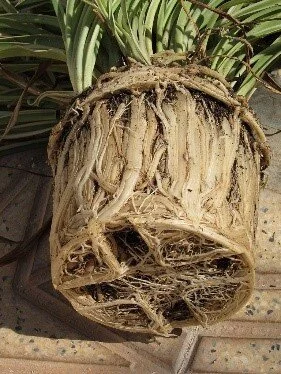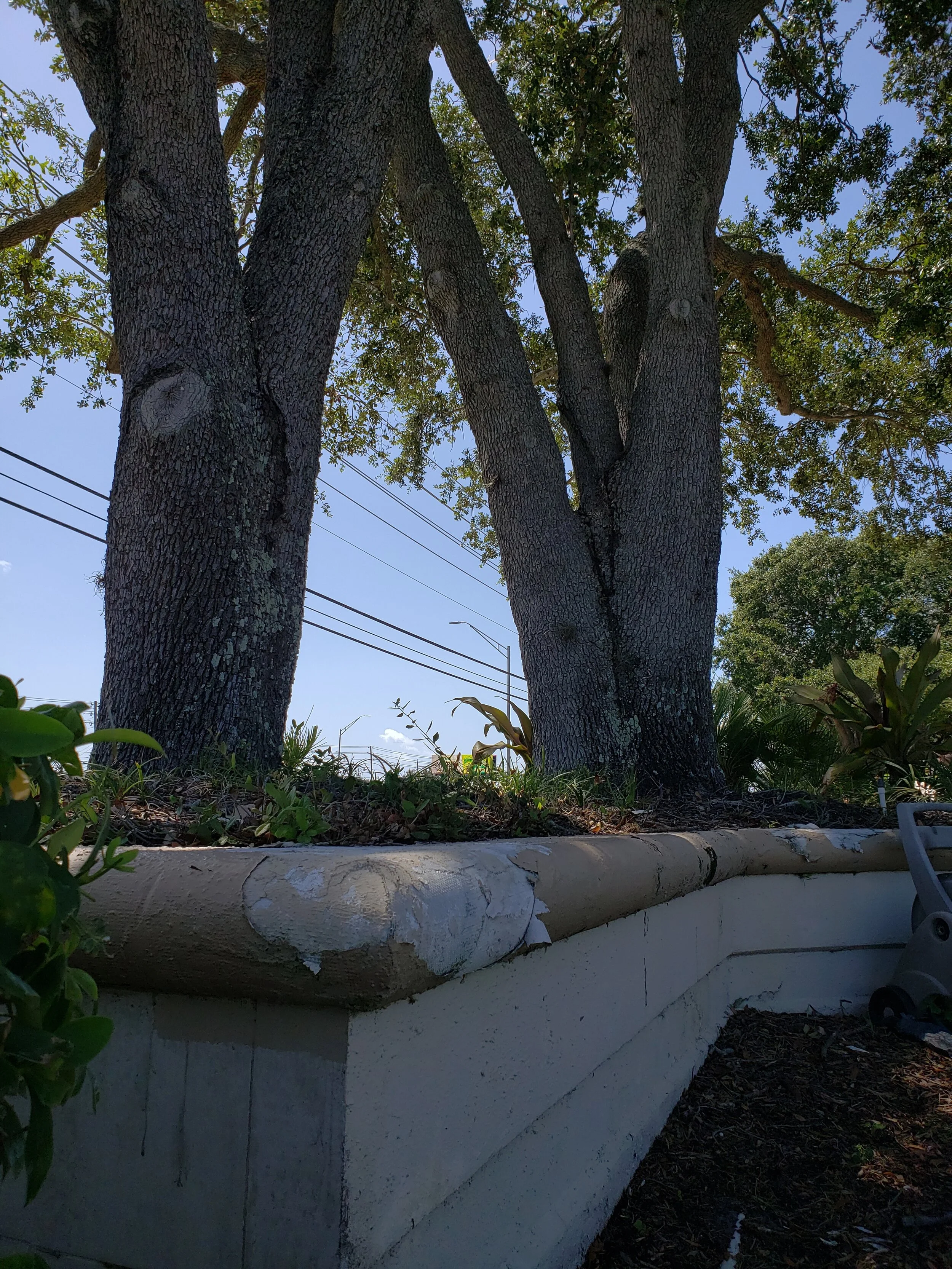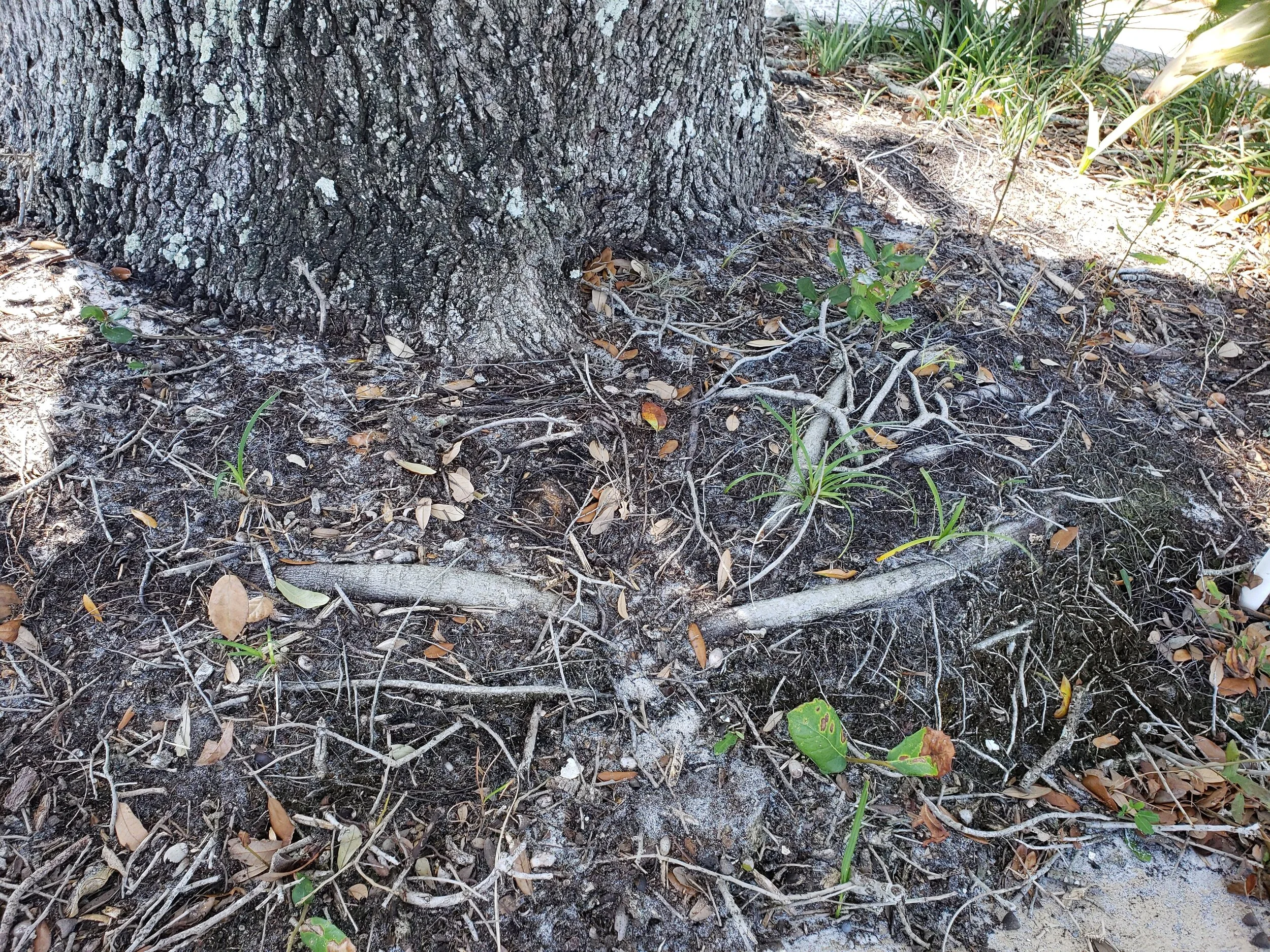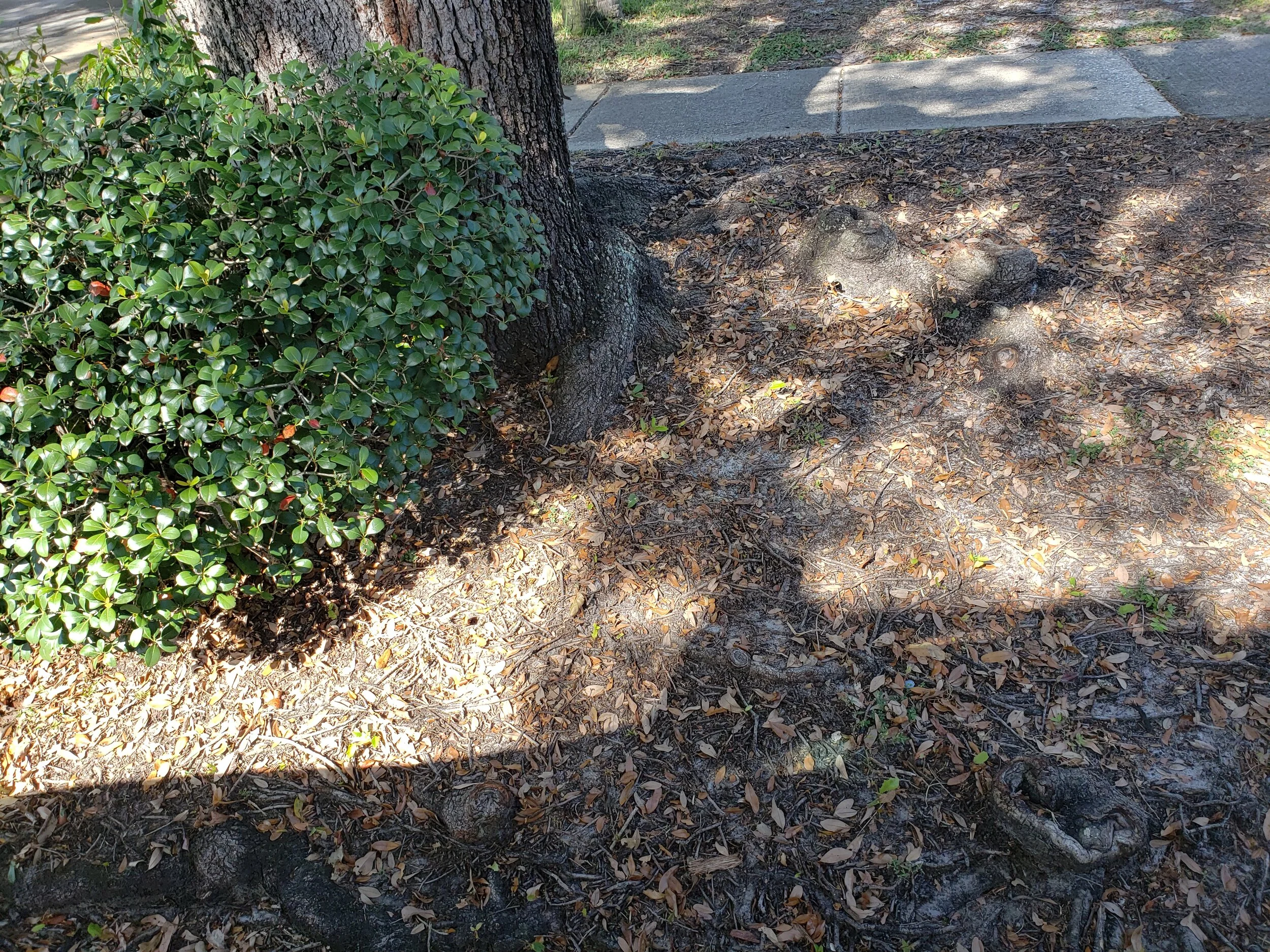Trimworks Tree Service in Largo FL has been in business for 15 years and have seen their fair share of girdling roots. Girdling roots are roots that grow around or across the stem of other roots. As the roots and trunk of the tree grow the roots begin to choke or girdle the tree. Tissue in the trunk become compress making it harder for the tree to absorb nutrients leaving the tree susceptible to failure. Many times girdling roots go undetected because it is happening below the surface. And the symptoms are often mistaking for disorders associated with other stressors. Girdling roots are usually not diagnosed until the problem reaches the surface and makes it a lot harder to correct and fix the problem roots.
What Causes roots to Girdle?
Girdling roots most often develop from container grown plants, poor planting techniques or poor choice in location of tree. Trees that are left in a container or pot too long start to become root bound.
(Root Bound: symptoms above the soil are hard to pinpoint and often look like symptoms of an under-watered plant. The plant may wilt quickly, may have yellow or brown leaves, especially near the bottom of the plant and may have stunted growth.) Which if not corrected while the tree is young will allow girdling roots to form later in the trees life.
Girdling can occur when a tree is planted to deep or if mulch has been applied to high up the base of the trunk. Over time growth of the branches affected by the girdling will be slowed. As injury progresses, leaves will become smaller, a lighter shade of green and fewer leaves will be produced. Eventually the affected branches will begin to die back and fail. Death of the entire tree can occur in five to 20 years. No amount of watering, fertilizing, or pruning will correct this problem.
Another example is if the tree is planted in a NOT so ideal location, like a median, parking lot or large enclosed landscape bed. Many people do not realize that tree roots grow wide not straight down. Trees need as much room on the ground as their canopies are wide. A tree planted in a parking lot will eventually develop girdling roots because it is surrounded by impervious surfaces like asphalt or concrete which will also make the soil compacted below. Compacted soil makes it harder for the tree to absorb nutrients and exchange oxygen and carbon dioxide.
Girdling roots begin to appear when the tree attempts to survive, the trees root system branches out in search of nutrients, only to be blocked by nearby structures and are forced to re-direct backward onto themselves, serving as a tourniquet –cutting off the nutrients such as water and minerals the tree was so desperately in search of.
What are some common signs of Girdling Roots?
Girdling roots are suspected if the trunk of the tree lacks flaring buttress roots. Girdling roots can usually be exposed by digging into the top few inches of soil on the side of the tree lacking a root flare. Use of an air spade by a certified arborist can expose roots without injuring them.
Common signs of girdling roots include the tree showing signs of dying off, starting at the top of the tree downward.
The tree is late to produce leaves in the spring or the leaves are smaller than usual
There are visible roots at the surface of the base of the tree
There is no visible root flare at the base of the tree
Yellowing of the leaves occur because the tree is not getting the required nutrients
Is there a way to Correct Girdling Roots?
You always want to make sure you consult with and hire a Certified Arborist, like Trimworks Tree Service in Largo, FL before attempting to correct girdling roots. If girdling roots are found by the Arborist they must be removed. A Chisel and air spade are usually used for this process. An Arborist will come in usually during the winter months and use an air spade to remove the dirt from around the girdled roots. Then he will selectively prune back the roots that are entangled. Careful selection is necessary because root pruning reduces the trees structural stability and reduces water and nutrient uptake.
If the inspection reveals a considerable amount of damage, the best action may be to remove the tree. Spending money on a weakened tree that dies can be an extremely frustrating experience. Correction of this problem is labor intensive, the costs and benefits should be weighed carefully prior to making any decisions. Removing a girdling root creates a wound, and if the wound is extensive more problems could arise. However, if nothing is done, the girdled -tree will likely decline further and eventually die. It could take up to 7 years for a tree to show its first signs of girdling and an additional 20 years to die from it. Trimworks Tree Service has experienced and certified staff that specializes in Diseased, Un-structurally sound and Hazardous Tree Removals in Pinellas County.
How to Avoid Girdling Roots?
Avoid over-mulching sometimes referred to as a mulch volcano
Pick your planting site wisely give your tree plenty of room to grow up and out
Use proper planting techniques
Choose tree species wisely some trees are at higher risk of developing girdling roots Like: Maple, Crabapple, Cherry, and Pear trees
Conducting an inspection of the tree during tree selection to verify the tree is not already root bound in the pot
Trimworks Tree Service in Largo, FL has been assisting clients with their tree needs for 15 years. We have experience in diagnosing and pruning girdling roots in the Pinellas County area. We have certified Arborist on staff to assist you in making the right decision regarding your trees. We are fully insured and equipped to get the job done right.
Give us a call today to schedule your free consultation. 727-289-1633




